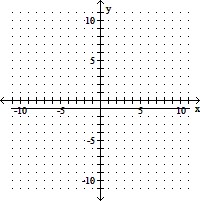Use mathematical induction to prove the following.6n > n
What will be an ideal response?
Answers may vary. One possibility:
Sn: 6n > n
S1: 61 > 1
Sk: 6k > k
Sk+1: 6k+1 > k + 1
1. Basis step: Since 61 > 1, S1 is true.
2. Induction step: Let k be any natural number. Assume Sk. Deduce Sk+1.
6k > k
6k ? 6 > k ? 6 Multiplying by 6, 6 > 0
6k+1 > k(1 + 5)
6k+1 > k + 5k
5k ? 1 5 ? 1 and k ? 1
6k+1 > k + 1
Mathematics
You might also like to view...
Graph using the slope and y-intercept.x = -1
A. 
B. 
C. 
D. 
Mathematics
Find the product.(m + 3)(m - 3)
A. m2 - 6m - 9 B. m2 - 6m + 9 C. m2 - 6 D. m2 - 9
Mathematics
Use the Laws of Exponents to simplify. Write the answer with positive exponents. All variables are nonzero.(5m-4n-3)3(2m3n-8)-2
A. 
B. 
C. - 
D. 
Mathematics
Solve the problem.The sum of 7 and the square root of some number is equal to 17. Find the number.
A. 20 B. 100 C. 10 D. 14
Mathematics